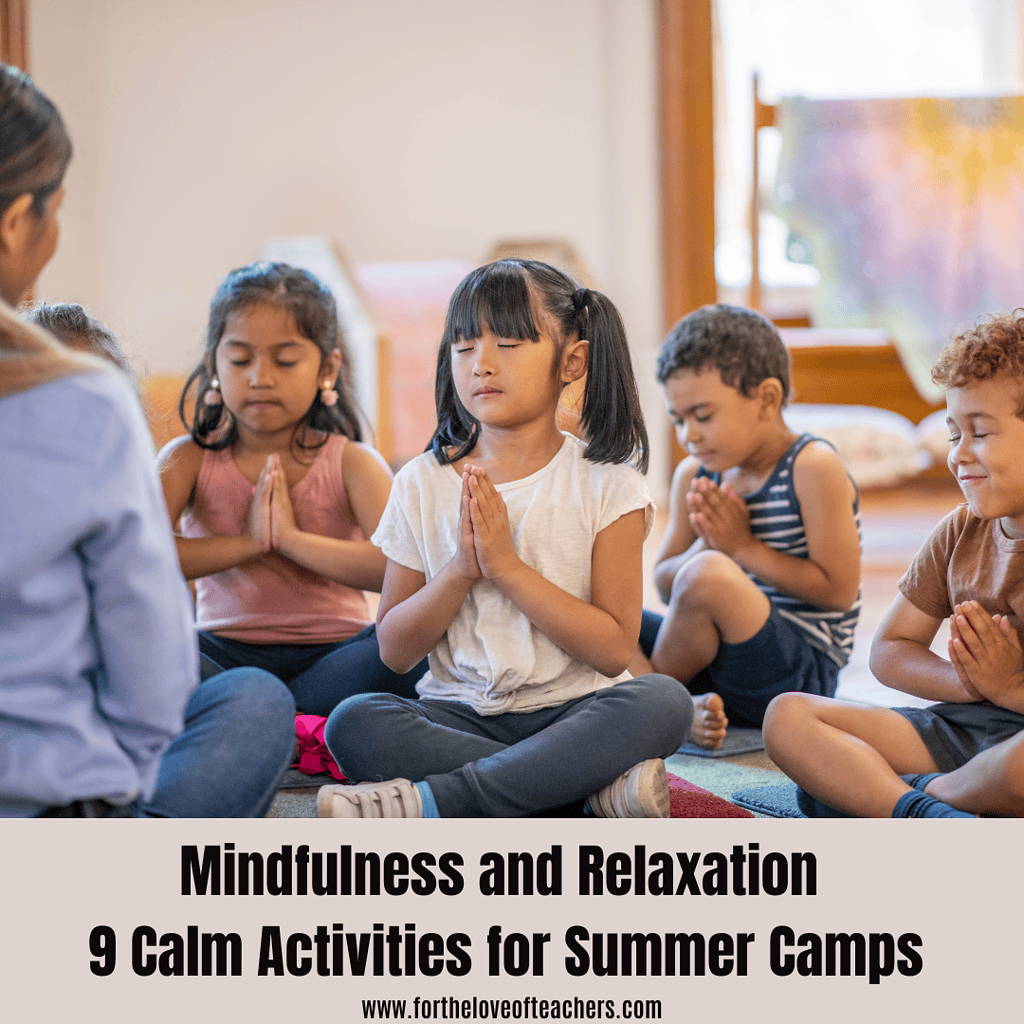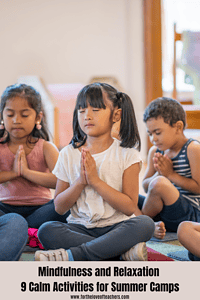As a dedicated teacher, you understand the crucial role you play in shaping the minds and character of your students. That’s why you seize every opportunity to make a positive impact.
This year, as you organize summer camps, you have the unique opportunity to transform these vibrant hubs of creativity, adventure, and friendship into nurturing sanctuaries. As a result, the kids can embark on journeys of discovery and growth, skill-building, social interaction, and lifelong memories under the sun. By incorporating practices that promote relaxation and calm, you can help young hearts and minds find peace amidst the chaos of their everyday lives.
Here are some innovative ideas to incorporate mindfulness into your camp curriculum:
1. Meditation Walks in Nature
Harness the therapeutic power of nature with guided meditation walks. Encourage campers to intentionally explore the surrounding environment, focusing on each step and the sights, sounds, and scents of the outdoors. Provide prompts to notice the details, like the rustle of leaves and the chirping of birds, to anchor them in the present moment. These walks not only cultivate mindfulness but also deepen appreciation for the natural world.
2. Creative Expression through Mandala Art
Engage campers in the meditative practice of creating mandalas. Set up a tranquil space with materials like colored sand, chalk, or natural elements found outdoors. Explain the significance of mandalas in various cultures as symbols of unity and harmony. Campers can design their mandalas, fostering concentration and creativity while experiencing the therapeutic benefits of artistic expression.
3. Yoga and Stretching Sessions
Craft yoga and stretching sessions specifically tailored to children’s needs. Focus on playful poses that promote relaxation and body awareness. Incorporate breathing exercises to teach campers techniques for stress relief and emotional regulation. Motivate them to embrace movement mindfully, fostering a sense of balance and physical well-being amidst the active camp schedule.
4. Mindful Eating Practices
Transform mealtime into a gently curated experience by encouraging campers to reflect on the origins of their food with each bite. This technique hits two birds with one stone, simultaneously fostering gratitude and enhancing sustainability awareness.
Introduce hands-on cooking sessions where kids can prepare and enjoy easy-to-make recipes perfect for on-the-go activities. Options include cold sandwiches filled with fresh vegetables and lean meats, fruit and yogurt parfaits, veggie wraps, cheese and cracker packs, and energizing trail mix. Additionally, guide campers to chew their food slowly to help them better appreciate textures and flavors and promote daily healthy habits and mindfulness.
5. Labyrinth Exploration
Create a labyrinth in a serene area of the campgrounds, marked clearly with natural materials or markers. Encourage campers to explore this structured and meditative journey. As campers enter the labyrinth, they embark on a reflective journey, following the winding path as it leads them toward the center and back out again.
This activity promotes concentration and invites campers to immerse themselves in the present moment, establishing a deeper connection with themselves and their surroundings. After completing the labyrinth, gather your participants for a reflective discussion. This allows them to share their experiences of tranquility and insight gained from the exercise.
6. Storytelling and Guided Imagery
Immerse your students in storytelling sessions infused with guided imagery. Create narratives that transport them to peaceful settings, like a tranquil forest or a serene beach, to evoke a sense of calm. Encourage campers to visualize these scenes, engaging their senses to deepen relaxation and imaginative exploration.
7. Gratitude Journaling
Gratitude journaling is an excellent nightly ritual that you can introduce to your students. Provide journals and prompts to reflect on moments of joy and appreciation throughout the day. Encourage them to write down what they are thankful for, fostering a positive mindset and resilience. By acknowledging gratitude, they cultivate a sense of contentment and connection to their surroundings.
8. Mindful Movement Activities
Incorporate mindful movement activities such as tai chi or gentle dance routines into the camp schedule. These activities promote relaxation through fluid, intentional movements that synchronize with breath. At the same time, campers become more aware of their bodies as they launch into various motions. You can also invite them to explore different forms of movement that resonate with their individual interests and abilities.
9. Relaxation Stations
Create designated relaxation stations throughout the campgrounds. These stations can offer quiet spaces equipped with comfortable seating, calming music, and sensory tools like stress balls or aromatherapy oils. Encourage campers to visit these stations during free time to unwind and recharge, promoting self-care and emotional well-being amidst the camp’s dynamic atmosphere.
A Final Takeaway
Integrating mindfulness and relaxation activities into summer camp activities enriches the overall experience for both campers and organizers alike. By nurturing moments of serenity amidst the excitement, teachers can empower children with lifelong skills for emotional regulation, stress management, and holistic well-being.
Ready to plunge into an extraordinarily calm and mindful experience for you and your students? Then embrace the practices we shared and nurture a generation of resilient and grounded individuals who can navigate life’s challenges with clarity and confidence.
About the Author:
Thanks for reading!
If you like it, then pin it!

Christine Weis is a passionate educator, classroom management coach, wife, and mom of two busy boys. She enjoys teaching, writing, and creating resources for teachers.








Leave a Reply